Unpacking Hopes and Fears: Understanding Narratives After The 2021 Coup In Myanmar

Author: Tin Moe Hein
Advisor: Piyapong Boossabong
Executive Summary
On February 1, 2021, the Myanmar military, or Tatmadaw, launched a coup against the civilian government, declaring the results of the November 2020 general election fraud and imposing a one-year state of emergency. From that day onward, Myanmar people have been resisting the brutal regime led by the State Administration Council (SAC) through different means ranging from armed revolution to participation in various boycott campaigns. By employing narrative analysis, the research aims to assess the differing hopes and fears of the key actors involved in the Myanmar political landscape – the People/ Federal Democratic Forces and the SAC. The Causal Layered Analysis (CLA) is adapted to differentiate the hopes and fears of both sides into four layers: Physical/Observable Layer, Systemic/Structural Layer, Discursive Layer, and Psychological Layer. The study aims to provide policy recommendations to international partners, particularly the UN, ASEAN, and Thai governments, on how to build up hopes and cope with the fears of the People/Federal Democratic Forces only. People’s hopes and fears inform the development of the policy recommendation, which aims to provide practical solutions in each layer.
Problem Statement
Hope is interpreted as a “positively-valanced emotion evoked in response to an uncertain but possible goal-congruent outcome” (MacInnis & De Mello, 2005). Fear is an involuntary and instinctive reaction to a potential threat, typically rooted in the present moment but often influenced by past experiences. It is considered easier to provoke, especially when utilizing images associated with primal and evolutionary dangers, such as physical harm or threats to one’s family (Bar-Tal, 2001). It has been fighting for over 70 years between the Tatmadaw – the Myanmar Military and Ethic Revolutionary Organizations in Myanmar. Although several meetings in various forms have been conducted, long-lasting peace has never been achieved.
Although both sides: the People/Federal Democratic Forces and the SAC revealed their ultimate aims for Democracy, the interpretation of hopes and fears related to future democracy in Myanmar is different. The understanding of why the two sides had never achieved a common goal, that could create long-lasting peace, became a prerequisite knowledge required to develop. This research has evolved to explore and analyze the hopes and fears of the People/Federal Democratic Forces and the SAC, which have not been thoroughly examined before.
Analytical Framework
The Causal Layered Analysis Framework is adapted to differentiate between the hopes and fears of the Myanmar people/pro-democratic forces and the SAC. The obtained secondary data will be classified into four distinct layers: the physical/observable layer, the systemic/structural layer, the discursive layer, and the psychological layer.
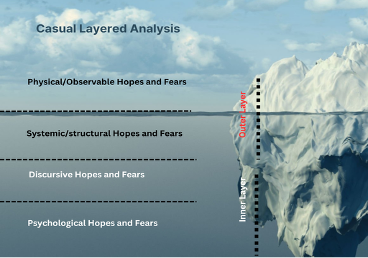
Policy Analysis
- Unpacking Hopes and Fears of the People/Federal Democratic Forces
To unpack the hopes and fears of the People/Federal Democratic Forces, the research used the slogans used during the protests of the 2021 Coup, that are collected from news and reports, and the Federal Democracy Charter (1)’s objectives through narrative analysis to evaluate its emotions and deep meanings.
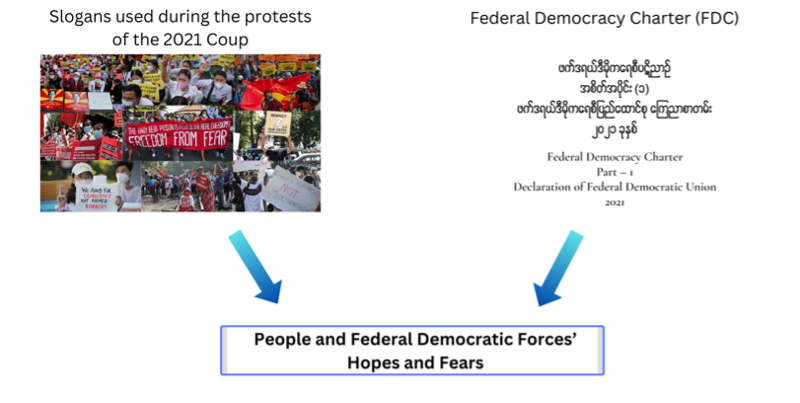
Figure 1: Narrative Analysis: Unpacking Hopes and Fears of the People/Federal Democratic Forces (Created by the author)
These slogans: “Return our elected government”, “Free our leaders”, and “Please save our Leader, Future, and Hope!” basically referred to releasing the leaders, including State Counselor Daw Aung San Su Kyi, President U Win Myint, etc. The trust put in those leaders can be proved by the winning results in the 1990 election, the 2012 by-election, the 2015 election, and again in the 2020 election. The four-time landslide win of the National League for Democracy has proved the willingness of the Myanmar people – to hope for change. Moreover, the slogans; “Fight for democracy”, “We want democracy”, “Save Myanmar”, and “Justice Myanmar” mention the public awareness of the value of democracy felt during the last 10-year period. Some slogans, such as “Help us stop crime against humanity” and “Stop helping the military” (referring to China and Russia, especially those who have veto power in the UN Security Council), can be interpreted as people’s hope for the political support of the international community to deter the military’s unfair actions. Another interesting slogan called “You messed with the wrong generation” is related to the 88-revolution, which people, specifically Generation Z, used to reveal that Generation Z – will not be fooled by the military at this time. The most used one, “Our aim: overthrow the military rebels/dictatorship,” can support a vivid vision of the protestors.
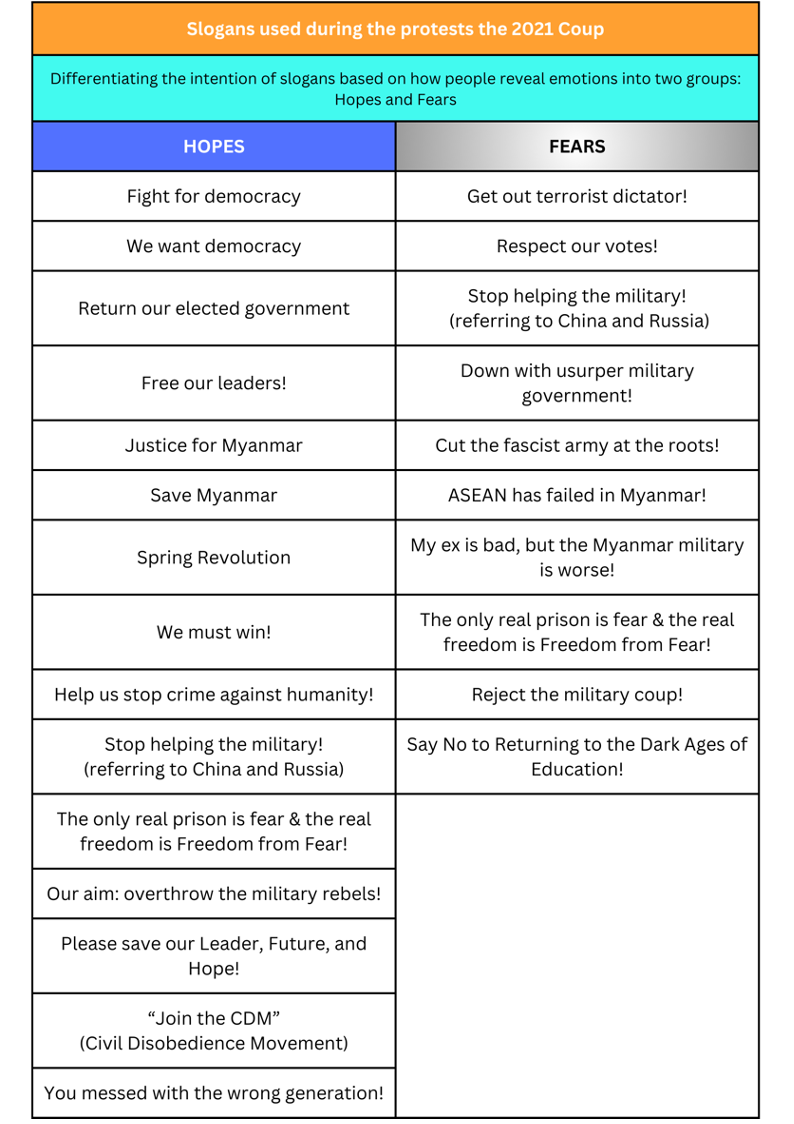
Figure 2: Slogans used during the protests of the 2021 Coup (Created by the author)
People revealed their fear – returning to the dark age, isolated country under military dictatorship – at the same time by using slogans during the demonstration. The frequently used words: military, dictator, dictatorship, fascist army, terrorist dictator, and military rebel, have specific meanings. Tracing back almost 80 years ago, the military was regarded as a savior of the country in terms of taking a leadership role in fighting against oppressors. Myanmar’s people are resisting the military takeover due to their desire for a future with dignity and optimism, known as “freedom from fear” by Aung San Suu Kyi. They are expressing their opposition to the infringement on their right to life, security, fulfillment, and meaningful life. Their resistance is driven by the desire to avoid returning to the era of military rule, characterized by fear of imprisonment, torture, loss of life, and loss of loved ones.
Regarding the perspective of federal democratic forces, the first and second objectives of the Federal Democracy Charter 1 reveal its intentions, the eradication of dictatorship is the priority. It can be understood that all sorts of dictatorship—not only military dictatorship but also one-party rule or dominance—must be eradicated in the future Federal Democratic Union. The second objective, the ultimate abolishment of the 2008 Constitution, is formulated because as long as the military and its handful of supporters’ written constitution—giving absolute power to the military—exists, the true federal democratic union will not be implemented.
- Unpacking Hopes and Fears of the State Administration Council (SAC)
To analyze the hopes and fears of the State Administration Council (SAC), this article looks at the junta’s first public speech, the 2008 Constitution, and the current operations of the SAC through the lens of narrative analysis.
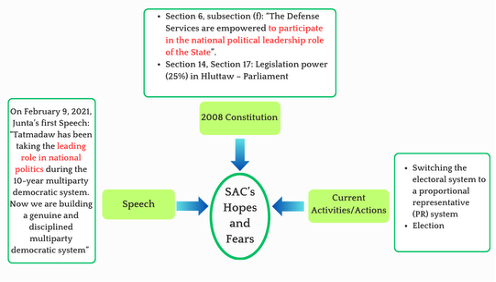
Figure 3: Narrative Analysis: Unpacking Hopes Fears of the SAC (Created by the author)
The Myanmar military, ensures its fundamental role as the “guardian” of the 2008 constitution, aiming to uphold the “sanctity” of absolute emergency powers (Ghai, 2008). Following Section 6, subsection (f) of the 2008 constitution, “the Defense Services are empowered to participate in the national political leadership role of the State”. Section 14 specifics the Pyidaungsu Hluttaw, Region Hluttaws, and State Hluttaws will include Defense Services personnel as Hluttaw representatives, nominated by the Commander-in-Chief, in the specified numbers (25%). Section 17 subsection (b) states that Defense Services personnel, nominated by the Commander-in-Chief, are responsible for defense, security, border administration, and other matters in the executive branches. The civilian administration lacks authority over the military, while it exerts control through legislative and executive institutions, and influences the National Defence and Security Council (Ghai, 2008).
In the first speech of the junta after the Coup 2021, he stated that “Tatmadaw has been leading Myanmar’s national politics for a decade, now building a disciplined multiparty democratic system”. Based on the 2008 constitution, the Tatmadaw’s significant fear is not to get rid of the “national political leadership role”. To protect its role, serving as a protector or guardian of the 2008 constitution, which gives ultimate dominance to the whole Myanmar political mechanism in line with the written laws, is the only way to sustain its hope—to attain absolute power.
The third factor—switching the electoral system to a proportional representative (PR) system—proved the junta’s effort to protect its role in the political process in terms of increasing its allies in the parliament. By changing the electoral system to a close-list PR system, the probability of taking more seats in the Hluttaw from the military-backed parties increases, and then the combination of the constitutionally given power—25 percent already held by the military—and the military-backed parties will account for over 51 percent of the total seats. The junta believes that the closed-list PR system will remove challenges, like the NLD’s landslide victory and the formation of government, without considering the military. The junta faces a huge challenge as a military-backed party’s comments, inspired by junta commander Min Aung Hlaing’s directive for “necessary preparations” before the 2024 national census, cast doubt on the possibility of conducting an election in 2025. The absence of complete stability, particularly in regions under complete military authority such as Yangon and Mandalay, contributes to the magnitude of this difficulty.
Unpacking of Hopes and Fears of the People/Federal Democratic Forces through Causal Layered Analysis
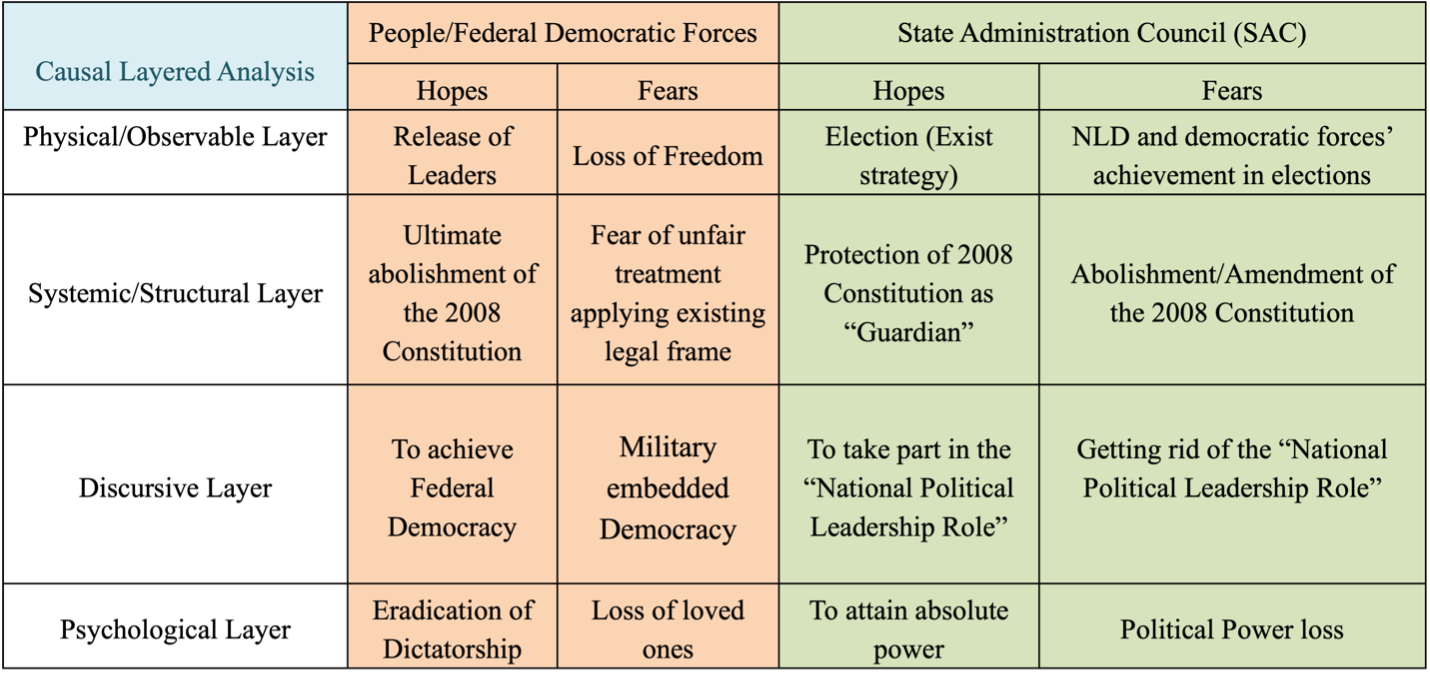
Figure 4: Unpacking of Hopes and Fears of the People/Federal Democratic Forces through Causal Layered Analysis
In the observable layer, the people’s common hope was the release of leaders – mainly calling for the release of State Counselor Daw Aung San Su Kyi and President U Win Myint – which was the main theme throughout the protests. The desire for the ultimate abolishment of the 2008 Constitution can be put under the systemic/structural layer because the SAC released its actions in line with the Constitution. In the discursive layer, people understand that Federal Democracy is the only way to fulfill their hope based on a 10-year-experience of the democratic regimes. In the deepest layer, people revealed their willingness to eradicate dictatorship. The reason is vivid because those people who endured military regimes for over 50 years have already experienced various repressive and unlawful actions.
Regarding observable fears, Myanmar people revealed the loss of freedom as the main fear. Since the SAC took the state power, it regulated a series of regulations to repress people’s freedom. From that day onward, thousands of people have been already detained due to especially section 505 (b) which criminalizes making, publishing, or circulating statements, rumors, or reports with intent to cause fear or alarm, potentially leading to offenses against the State or public tranquility. Consequently, people became afraid of being imprisoned and tortured and it is revealed as Fear of unfair treatment applying existing legal frame in systemic fear. In the discursive layer, military-embedded Democracy is a prominent fear for people. Afraid of being loss of loved ones ranging from family members to friends is the fear in the deepest layer.
The common hope from the side of the SAC is an election which will be an exit strategy for the junta from the recent political turmoil. According to the recently changed election system – the proportional representative system, the SAC expects to control the political power legally. In the structural layer, the 2008 Constitution is the concrete wall protecting and allowing the military to implement its power through the parliament. Thus, the protection of the 2008 Constitution as a guardian is in the systemic layer. Consequently, according to the 2008 Constitution and the junta’s speeches, taking part in Myanmar’s political process/history in the National Political Leadership Role is interpreted as discursive hope for the military. The core intention of the junta, which is in the psychological layer, is to attain absolute power without any rivals in Myanmar politics.
In addition to this, the SAC took the historical lessons which were the landslide winning of NLD in 1990, 2015, and 2020 elections. The prominent observable fear for the junta is the NLD and federal democratic forces’ achievement in elections. The common structural fear and discursive fear of the junta are related to the hopes mentioned in hopes respectively. The junta will not accept any activities that will amend the 2008 constitution which is giving them privileged power. If the junta loses its grip on politics, especially governance, it assumes that any sort of action in the form of revenge will be conducted by the elected government which is not its ally. Therefore, the loss of political power can be categorized as the psychological/deepest fear of the military. The most significant finding is that the Hopes of People/Federal Democratic Forces are Fear of SAC and Hopes of SAC are Fear of People/Federal Democratic Forces.
Policy Recommendation for the UN, ASEAN, and Thai Government
The International Community needs to consider how to build up hopes that people/federal democratic forces want and deal with fears that they want to refrain from. More dialogue channels in which all parties have an equal chance to participate should be developed in the process of effective policy formulation to address conflicts in Myanmar. At this time, the policy recommendation is only delivered to the people/federal democratic forces side. Due to the research limitation, for the time being, it is unable to figure out the common hopes and fears of the two sides. Besides, these recommendations still need to be taken into additional consideration based on stakeholder analysis by further studies.
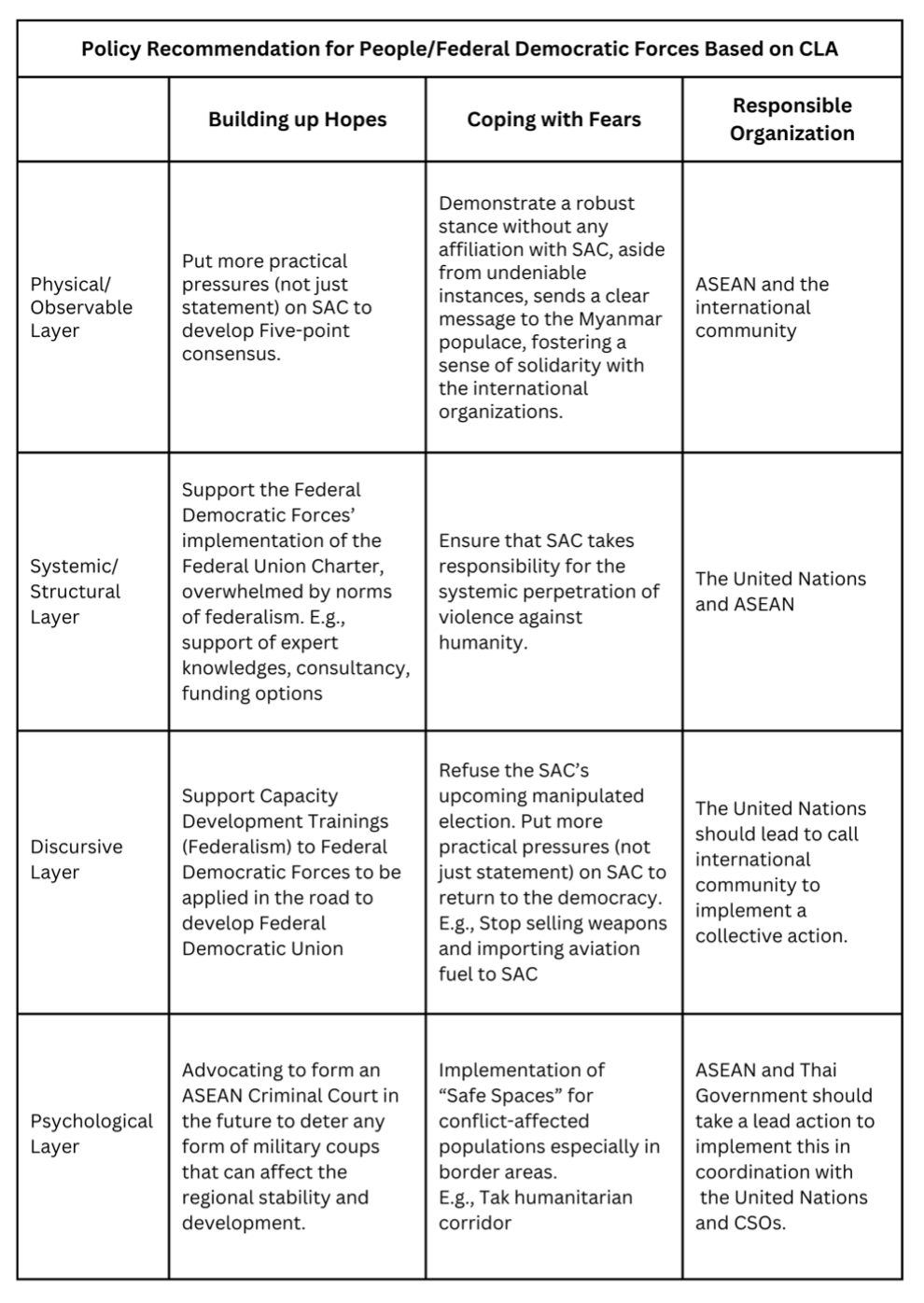
References
[1] Bar‐Tal, D. (2001). Why does fear override hope in societies engulfed by intractable conflict, as it does in the Israeli society?. Political Psychology, 22(3), 601-627.
[2] Federal Democracy Charter (2021). Myanmar Law Library. (n.d.). https://myanmar-law-library.org/law-library/laws-and-regulations/constitutions/federal-democracy-charter-2021.html
[3] Five-point Road map of the State Administration Council. (n.d.). https://cdn.myanmarseo.com/file/client-cdn/2021/08/8-8-20211.pdf
[4] Ghai, Y. (2008). The 2008 Myanmar constitution: Analysis and assessment. Open Society Institute.
[5] mitv. (2023). EFFORTS FOR COUNTRY: SAC ISSUES NEW 5-POINT ROADMAP AND 12 OBJECTIVES. https://www.myanmaritv.com/news/efforts-country-sac-issues-new-5-point-roadmap-and-12-objectives
[6] Myanmar Law Library. Constitution of 2008 – Myanmar Law Library. (n.d.). https://www.myanmar-law-library.org/law-library/laws-and-regulations/constitutions/2008-constitution.html
[7] MacInnis, Deborah J., and Gustavo E. De Mello. 2005. “The Concept of Hope and Its Relevance to Product Evaluation and Choice.” Journal of Marketing 69 (1):1–14.
[8] The Global News Light of Myanmar (2021, February 9). Republic of the Union of Myanmar State Administration Council Chairman Senior General Min Aung Hlaing makes speech to public https://www.gnlm.com.mm/republic-of-the-union-of-myanmar-state-administration-council-chairman-senior-general-min-aung-hlaing-makes-speech-to-public/
Download full paper: Click
